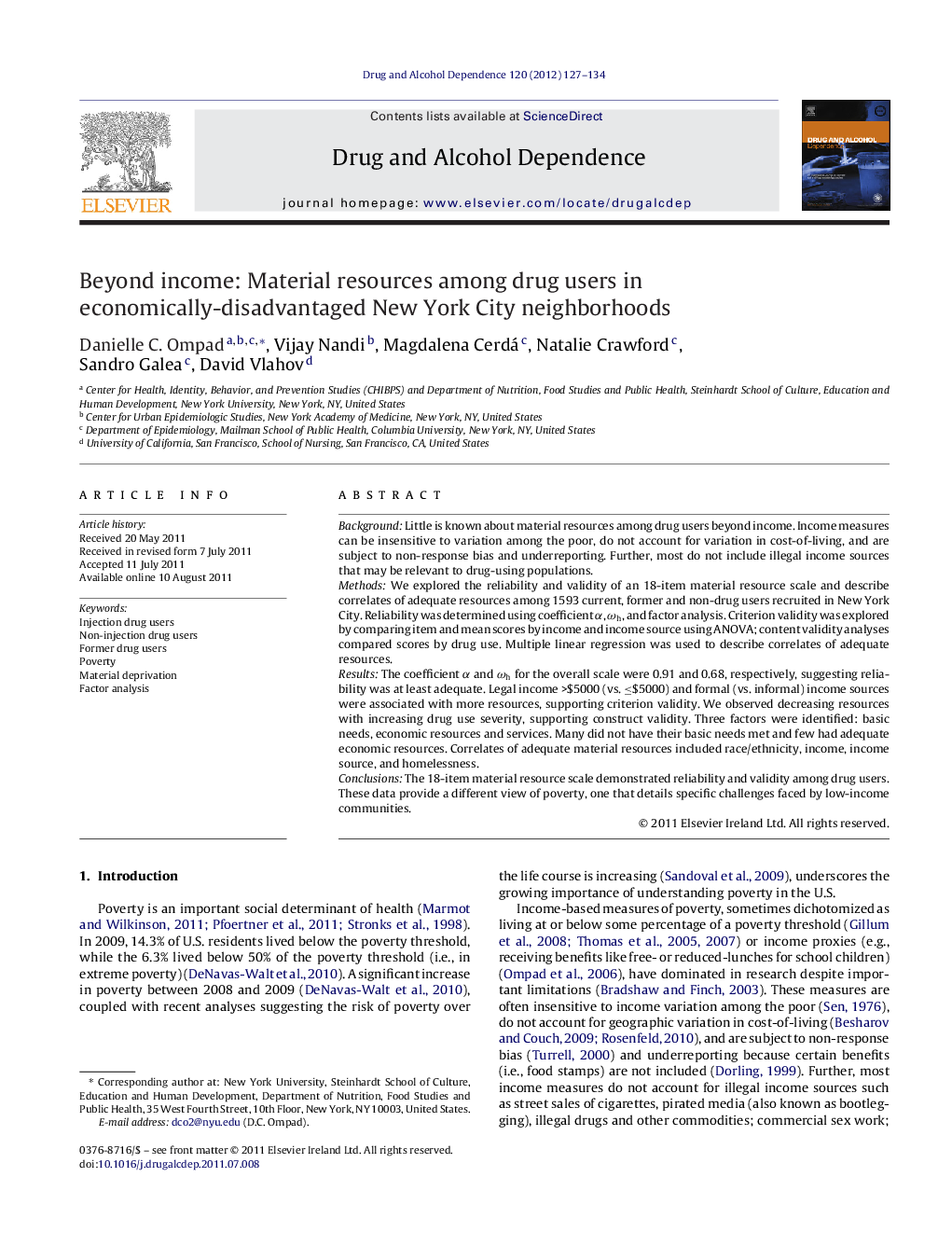| Article ID | Journal | Published Year | Pages | File Type |
|---|---|---|---|---|
| 1070194 | Drug and Alcohol Dependence | 2012 | 8 Pages |
BackgroundLittle is known about material resources among drug users beyond income. Income measures can be insensitive to variation among the poor, do not account for variation in cost-of-living, and are subject to non-response bias and underreporting. Further, most do not include illegal income sources that may be relevant to drug-using populations.MethodsWe explored the reliability and validity of an 18-item material resource scale and describe correlates of adequate resources among 1593 current, former and non-drug users recruited in New York City. Reliability was determined using coefficient α, ωh, and factor analysis. Criterion validity was explored by comparing item and mean scores by income and income source using ANOVA; content validity analyses compared scores by drug use. Multiple linear regression was used to describe correlates of adequate resources.ResultsThe coefficient α and ωh for the overall scale were 0.91 and 0.68, respectively, suggesting reliability was at least adequate. Legal income >$5000 (vs. ≤$5000) and formal (vs. informal) income sources were associated with more resources, supporting criterion validity. We observed decreasing resources with increasing drug use severity, supporting construct validity. Three factors were identified: basic needs, economic resources and services. Many did not have their basic needs met and few had adequate economic resources. Correlates of adequate material resources included race/ethnicity, income, income source, and homelessness.ConclusionsThe 18-item material resource scale demonstrated reliability and validity among drug users. These data provide a different view of poverty, one that details specific challenges faced by low-income communities.
